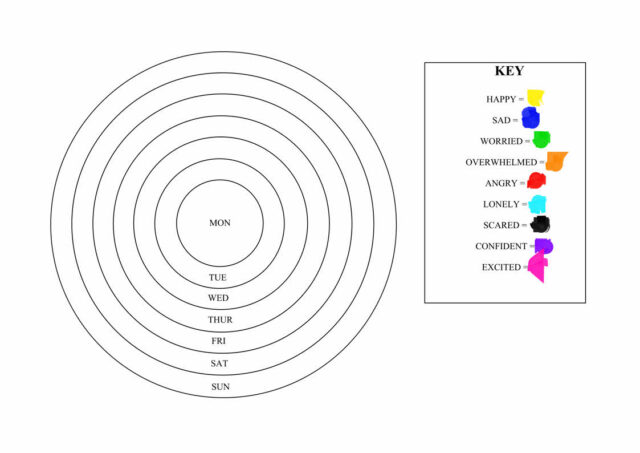Today was the last day of Children’s Mental Health Week.
The past year has been extra stressful, especially for parents who have had to adapt and become teachers on top of their usual daily activities. If you have been feeling exhausted, anxious and overwhelmed, these are completely normal and understandable feelings during a pandemic and you are not alone! Lockdowns have undoubtably had an impact on everyone’s mental health so now more than ever, it is crucial to look after our wellbeing. After all your mental health as a parent impacts directly on your child.
With a lack of social interaction with schools being closed and restrictions in place, children are not seeing their friends and playing. This can cause children to feel lonely and cut off from the world they are used to. Some children might have vulnerable family members at home and are scared of them getting sick or even dying, causing anxiety and depression. Other children might feel overwhelmed with home learning or worry they will fall behind their peers. As an adult this pandemic can all be a lot to take in so we can only imagine how difficult, strange and scary this is for children who often have much more vivid imaginations. It is important we allow children to express their thoughts and feelings to help them deal with the emotions they might be feeling.
The theme for this year’s Children’s Mental Health Week is ‘Express Yourself’ and is perfect for this. It focuses on the creative ways children and adults can share feelings, thoughts or ideas through art, music, writing, poetry, dance, drama, photography and film, or just doing activities that make them feel good.
What is Self-Expression?
Self-expression is about communicating your individuality through words, your appearance (clothes, hair, make-up, etc) or through art forms such as writing, drawing, music and dance. Self-expression can help you to share your story, your thoughts, feelings and emotions. This can also make us feel vulnerable. To be vulnerable is to be open, when you are open it allows space for growth. It can be scary – take it one step at a time! Letting go of other people’s expectations of how we should look, behave, speak, feel, etc is tough, but try to find your authentic self – your voice!
Self-expression is a great way to relieve yourself of stress and free your mind. Self-expression can help you to reflect on your life, actions, decisions, relationships, beliefs, and thoughts — rather than keep them bottled up. It helps us connect with ourselves, helps others understand us and connect with us, opens up doors of communication and helps build communities.
3 creative ways you can express yourself and release some of that tension (for adults and children)
- Put on some upbeat, feel good music and DANCE! Music AND exercise releases endorphins which make you feel happy and boost your mood. Put on your favourite track and you won’t even realise you’re exercising once you’re up and singing along. Guaranteed you will go for a second track too once you get going! It doesn’t matter if you think you can dance or not, dance is a feeling and as long as you are letting go and interpreting the music in your own way and not having a care in the world – you’re dancing! Can’t keep rhythm? Dance to your own beat! If you have children, dance with them, be silly and have fun. A couple of great tracks to dance to include “Express Yourself” -Labrinth and “Happy” – Pharrell.
- Create a mood board. Grab a piece of A3 paper or a canvas and a range of materials from whatever you have at home. This can include pencils, pens, paint, assorted paper, magazines, newspaper, stickers, foil, leaves, literally anything!) Take a moment to think about how you’re feeling and any worries you might have. Now think about what colours, shapes, lines and material you could use to symbolise your feelings and worries. You can stick, draw, write words, splatter paint –You don’t even need to be a great artist, it’s all about expression and getting those thoughts out of your head and onto paper!
- Write your thoughts and feelings down in a diary or blog. Even if you do not intend on sharing this with anyone, often just getting what’s in your mind out and down on paper can help release tension and negative thoughts. You could even scrunch it up or tear it up and throw it away afterwards if you wanted to.
- If writing loads isn’t your thing, you could try a daily mood tracker such as the one below. Draw a circle each week with 7 rings/spaces to represent the 7 days of the week. On the side, write down some moods and a corresponding colour key to represent that mood (see example) You can include any moods or colours you like. At the end of each day take a moment to think about what your mood/s were that day and colour that day’s ring in the corresponding colour/s. If you felt happy, worried and angry all in one day you can include all these in your ring. How much of the day did you spend feeling each of these 3 emotions? You could even add words or sentences in the ring to describe how you were feeling or why you might have felt that way (it is ok if you don’t know) You can then look back and track how you have been feeling each day and week to help you stay on top of your wellbeing.

We hope you find these self-expression ideas useful, not just for this week but beyond. If you are a parent worried about your child’s mental health, don’t worry alone. At Elevate Arts we are ALWAYS here to listen. There are also a number of specialist charities and organisations you can contact for support, advice and information:

